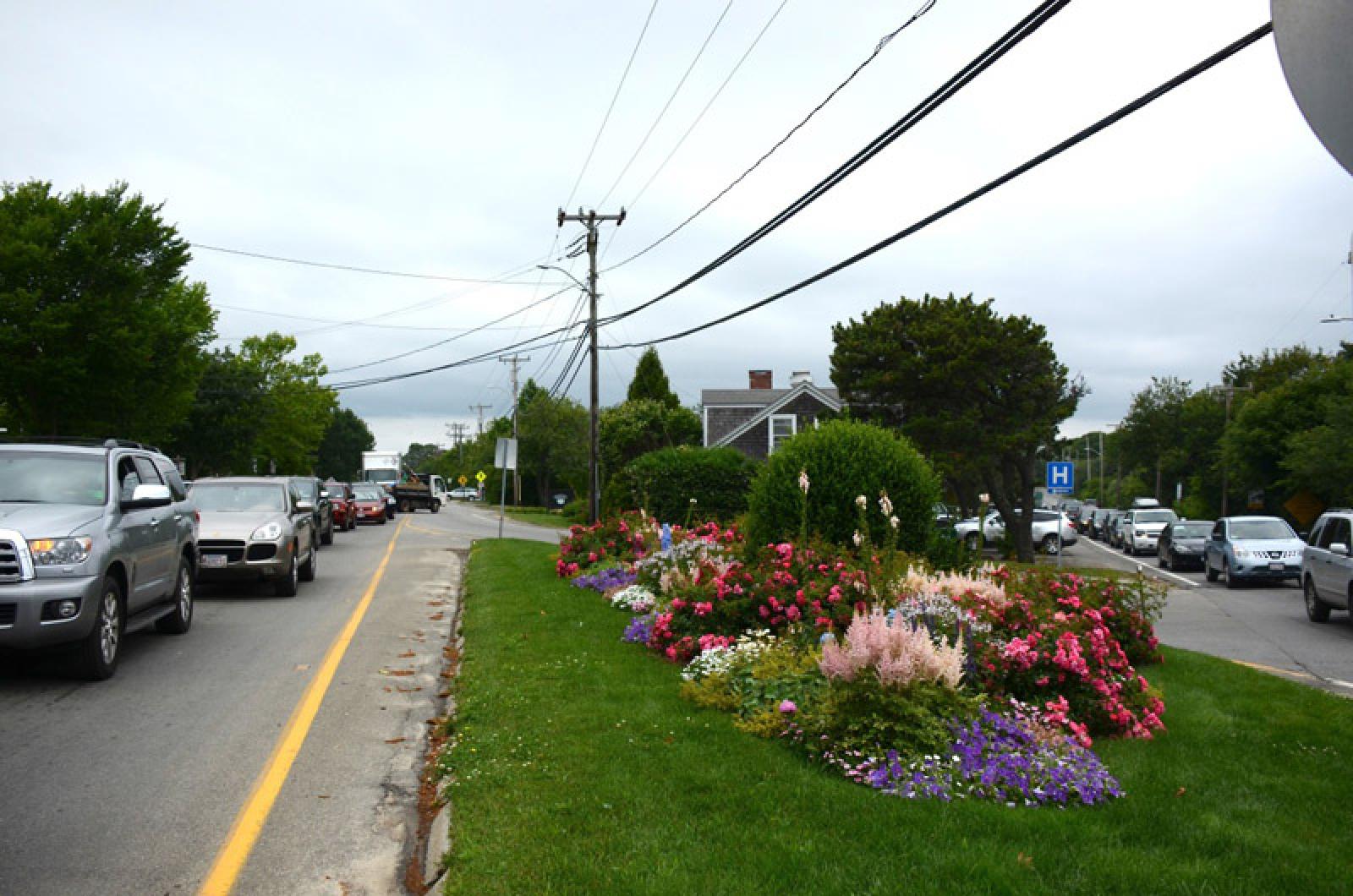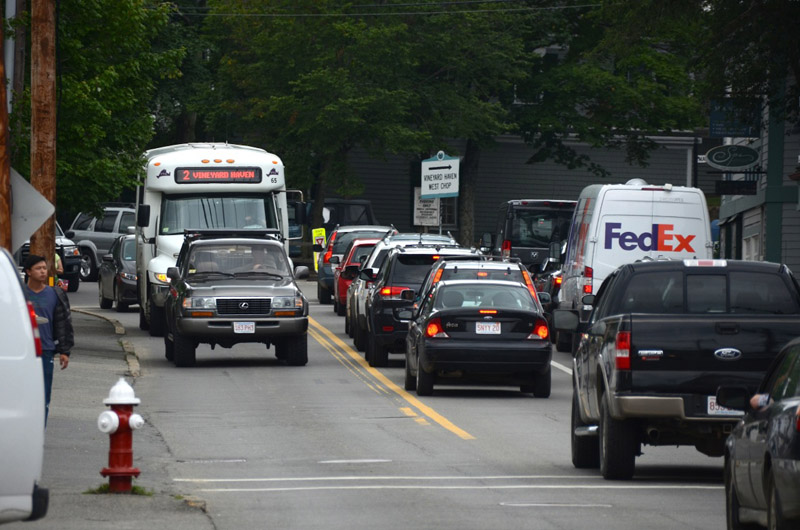Against a backdrop of explosive population growth and increasing traffic congestion in the summer months, a draft transportation plan released this week by the Martha’s Vineyard Commission outlines a series of goals and projects for the next quarter century on the Island.
About $47.5 million in state and federal funding is expected to support infrastructure projects on the Vineyard over the next 25 years, according to the plan. Projects slated for the next five years include the ongoing multi-million-dollar drawbridge project at Lagoon Pond and a shared-use path running through Oak Bluffs.
But despite the results of a recent online survey that shows deep concern about traffic congestion at several key intersections, the plan proposes very little spending on improvements to Five Corners, the intersection of the Vineyard Haven-Edgartown and State Roads and at the area known as the Triangle in Edgartown.
The Martha’s Vineyard Transportation Plan is updated every four years, with opportunity for public comment. A shorter-term plan for Transportation Improvement Program (TIP) projects is updated every two years, along with another plan for management activities. Every region in the country uses the same three document types for transportation planning.
Public comments on the Vineyard transportation plan are open through Monday. A public hearing on Tuesday in Oak Bluffs was attended by MVC director Mark London, senior MVC transportation planner Priscilla Leclerc and one member of the press.
“Usually no one comes to these,” said Mr. London, who had brought his lunch to the afternoon meeting. “We have to assume that people are happy with the proposal.” He added that nothing in the revised plan is new or controversial. Further comment will be collected for specific projects once they begin.
On the Vineyard, the transportation planning process starts with each town identifying potential projects or problems that are then reviewed by an MVC subcommittee and added to the transportation plan. Projects that are approved by the state go on to the TIP document, which provides a more detailed four-year budget. The entire process, from planning to completion, often takes years.
The latest TIP project to get underway on the Vineyard is the adjustment of the intersection of Old County and State Roads in West Tisbury to make each leg more visible to drivers. That project was budgeted at $350,000 in local funds and designed by the state Department of Transportation. The MVC began discussing the project more than 10 years ago. The roundabout project in Oak Bluffs, completed in 2013, was also about 10 years in the making.
Some projects, like the roundabout, are relatively straightforward, Mr. London said, although they may generate heated debate. But for some problem areas, including the Five Corners in Vineyard Haven, there are no obvious solutions. “If someone had a really great idea . . . . they would have done it a long time ago,” Mr. London said.
MVC survey respondents this year rated Five Corners the most dangerous intersection on the Island, followed by the intersection between Look street and State and Edgartown-Vineyard Haven Roads. Neither intersection has been flagged for TIP funding, although $150,000 in pedestrian improvements at the Five Corners is proposed for sometime between 2021 and 2025.
Infrastructure goals on the Vineyard, as in other places, focus on reducing the number of cars on the road. The MVC encourages biking, public transit and walking as alternatives, by distributing maps and brochures, but also by improving infrastructure. Many of the proposals in the transportation plan call for sidewalk and shared-use path improvements. Ten new bus stops around the Island, at $15,000 apiece, are proposed for the period between 2021 and 2025.
Most survey respondents (77 out of 119) strongly agreed that Island bike paths should be completed to connect town centers in Vineyard Haven, Oak Bluffs and Edgartown. Respondents also prioritized the expansion of free shuttle service and park-and-rides near the town centers.
“All these things take time,” Mr. London said. “When I moved here 13 years ago, the Tisbury park and ride was empty. Now it’s full. These things take many, many years.” But he added that with low-density development, most of the Vineyard is still very much dependent on cars. Most survey respondents do not favor altering existing roads to accommodate more traffic.
Ride-share networks like Uber may help take cars off the road, Mr. London said, but most people are just starting to think about how they would fit in with the existing transportation mix. He pointed out that taxi companies on the Vineyard operate more like shuttles, departing only after they are full. But Uber, which employes private drivers with their own cars, is more like a regular taxi service, which could give it an even greater advantage on the Vineyard.
The draft plan does not mention the possibility of commercially viable automated cars, although Mr. London pondered the idea of the Vineyard serving as a trial area for the new technology. “With a limited road network, it would be interesting to try it out,” he said, recalling a discussion several years ago about doing the same for electric cars. “I could see that being something.”
The next stop for the plan is the state Department of Transportation, which will decide which proposals to fund. The MVC subcommittee approved the draft plan in June. Public comments may be sent to Priscilla Leclerc at leclerc@mvcommission.org.








Comments (26)
Comments
Comment policy »